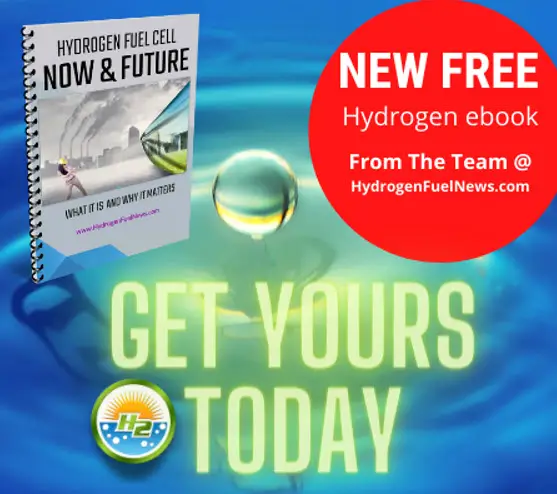
Fuel Cells in the Field: How GM is Proving Hydrogen’s Power in Real Life
February 5, 2025Exploring HYDROTEC Fuel Cells: A Game-Changer in Clean Energy
General Motors (GM) is turning technological promise into practical impact with its HYDROTEC fuel cell systems. These cutting-edge hydrogen-powered units offer a sustainable and versatile energy alternative, capturing attention for their ability to deliver clean energy in both emergency scenarios and demanding environments. From aiding wildfire recovery efforts in California to exploring military applications with the U.S. Army, HYDROTEC is paving the way for more accessible hydrogen-powered solutions.
How HYDROTEC Technology Works
At the core of HYDROTEC lies hydrogen fuel cell technology, which marries simplicity with innovation. The fuel cell combines hydrogen stored in dedicated tanks with oxygen from the air, generating electricity through an electrochemical reaction. This process emits only water vapor, making it an environmentally friendly energy source with zero greenhouse gas emissions.
Each HYDROTEC unit contains GM’s Generation 2 fuel cell power cubes. These modular systems are designed for versatility, offering scalable power output ranging from 60 kilowatts to 600 kilowatts. Built with reduced amounts of precious metals and compact components, the design prioritizes efficiency, durability, and cost-effectiveness. The compact nature of the system allows it to be adapted for various uses, from commercial transportation to industrial power generation.
Real-Life Applications Bringing the Technology Into Focus
The potential of HYDROTEC fuel cells is not limited to clean energy advocacy—it’s already being demonstrated in the field. This includes helping communities affected by California’s recent wildfires. GM has deployed hydrogen-powered mobile charging units equipped with this technology to provide energy relief. These chargers can fast-charge electric vehicles (EVs) even in areas where wildfire damage has disrupted traditional power infrastructure. For victims of these natural disasters, such immediate energy access offers both practical aid and a glimpse into hydrogen’s potential to revolutionize disaster response.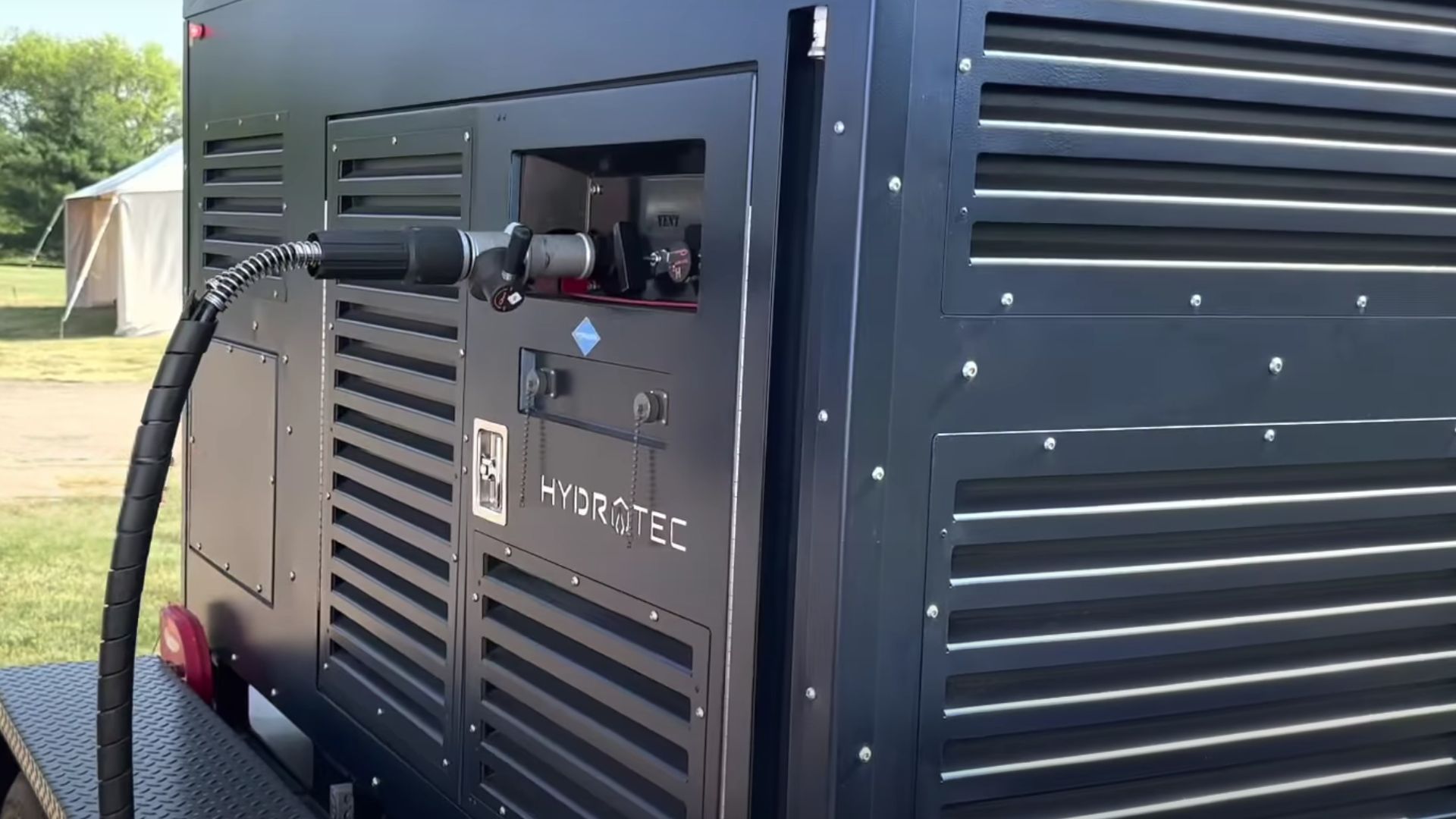
But the HYDROTEC story doesn’t stop at emergency scenarios. GM’s collaboration with the U.S. Army showcases how this technology is ready to tackle more rugged and demanding environments. For example, the U.S. Army is exploring hydrogen fuel cell-powered medium-duty trucks and mobile generators equipped with HYDROTEC units. These systems are being evaluated for their ability to deliver clean, reliable energy for military operations, whether powering heavy-duty equipment or establishing off-grid power stations for field camps.
Interestingly, a palletized version of the HYDROTEC generator is undergoing testing for defense-specific uses. This prototype is capable of delivering 70% more power than traditional diesel generators while maintaining quieter operation and emitting only water as a byproduct. Such features are invaluable for military applications, where operational efficiency and stealth are critical requirements.
Hydrogen vs. Diesel Generators – The New Energy Frontier from GM
HYDROTEC fuel cells could act as portable energy solutions for movie sets, construction sites, or even as backup power for commercial businesses during outages. GM’s advancements in fuel efficiency and scalability make this an attractive option for any scenario requiring portable, emission-free power.
They are designed to run longer and operate more quietly than traditional diesel generators. Here’s how:
-
Longer Runtime: Hydrogen fuel cells are highly efficient, converting hydrogen into electricity with minimal energy loss. This efficiency, combined with the ability to refuel quickly, allows HYDROTEC generators to provide extended operational times compared to diesel generators, especially in scenarios where consistent power is needed.
-
Quieter Operation: Unlike diesel engines, which rely on combustion and produce significant noise, hydrogen fuel cells generate electricity through an electrochemical reaction. This process is nearly silent, making HYDROTEC generators ideal for applications where noise reduction is critical, such as military operations, disaster relief, or urban environments.
Accelerating Toward Market Availability
These real-world deployments of HYDROTEC technology signal that hydrogen-powered solutions may hit the consumer and commercial markets sooner than expected. GM is currently in the pilot phase, using these situations to refine the technology, reduce costs, and optimize usability. However, the growing demand for clean energy solutions, coupled with the practical successes seen during wildfire recovery and military testing, suggests that the timeline for broader availability is narrowing.
Funding from organizations like the U.S. Department of Energy and partnerships with companies like Renewable Innovations further support the rapid advancement of HYDROTEC infrastructure. For instance, GM’s development programs include hydrogen-powered mobile EV chargers and palletized generators, designed with both environmental and functional efficiency in mind. Projects like the California Energy Commission-backed power grid initiative further demonstrate the viability of hydrogen for disaster relief and beyond.
Looking beyond these pilots, future implementations could range from hydrogen fuel stations along highways to zero-emission solutions for transportation hubs and industrial centers. GM’s focus on affordability and scaling production gives hope that hydrogen-powered systems won’t remain out of reach for long.
Hydrogen Power Could Hit the Mainstream Faster Than Expected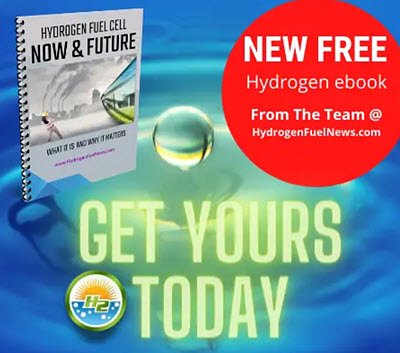
Hydrogen-fueled systems like HYDROTEC aren’t just experimental—they’re becoming vital tools for addressing urgent societal challenges. Whether it’s supporting wildfire victims, providing clean energy in remote military operations, or transitioning industries away from fossil fuels, the impact of these technologies begins with practical, real-life uses.
For eco-conscious communities or businesses looking to reduce their reliance on diesel generators, hydrogen powered generators represents a tangible step toward a cleaner future. The flexibility of fuel cell systems means they could supplement local grids, act as backup power during emergency outages, or replace diesel generators at remote worksites.
The current pace of development also suggests this isn’t a distant dream. GM’s pilot programs and partnerships are accelerating timelines that might otherwise stretch for decades. The lessons learned from deploying HYDROTEC units in real environments make it clear—clean, hydrogen-powered energy is closer than we think.
A Glimpse at What’s Next
While scaling up hydrogen infrastructure and production remains a hurdle, GM’s efforts prove that real change is within reach when technology is paired with practical application. Whether assisting people rebuilding after wildfires or helping the Army achieve zero-emission operational goals, HYDROTEC is a shining example of how innovation can meet pressing needs.
What’s exciting is that these hydrogen-powered advancements may soon be available not just to firefighters or soldiers, but to everyday people and businesses. From disaster relief to powering remote communities, hydrogen fuel cells stand ready to transform the way we think about energy—and the future is closer than we think.


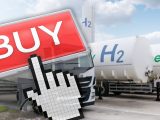
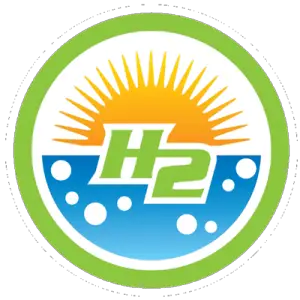 With over 15 years of reporting hydrogen news, we are your premier source for the latest updates and insights in hydrogen and renewable energy.
With over 15 years of reporting hydrogen news, we are your premier source for the latest updates and insights in hydrogen and renewable energy.